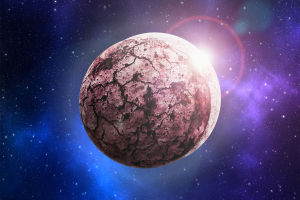In our solar system, Uranus and Neptune stand out as a pair of vividly coloured planets.
Often referred to as the "twins" of the solar system, these planets share striking similarities in their data and fundamental components.
Despite their close resemblance, they exhibit intriguing differences in colour and composition, which have captivated astronomers for years. Recent research has shed light on the "colour mystery" surrounding these two ice giants, providing new insights into their appearance and behaviour.
Uranus and Neptune are both classified as ice giants, a category distinct from the rocky planets like Earth and the gas giants such as Jupiter and Saturn. Unlike rocky planets, which have solid surfaces, and gas giants, which are predominantly composed of hydrogen and helium, ice giants have a more diverse composition.
They contain about 20% hydrogen and helium, with the remainder being mostly composed of inorganic compounds such as methane, ammonia, and water.
These ice giants also feature atmospheres with varying proportions of ammonia, carbon dioxide, and methane, which can change state from gas to liquid and solid during seasonal transitions, forming substances like dry ice, ammonia ice, and methane ice.
The colour of Uranus has long been a subject of fascination due to its seasonal changes. A study published in the Monthly Notices of the Royal Astronomical Society revealed that Uranus's colour varies with the changing seasons, a phenomenon tied to its atmospheric composition.
Uranus takes 84 Earth years to complete one orbit around the Sun. During the summer and winter solstices, when the planet's poles face the Sun, its colour appears green. Conversely, during the spring and autumn equinoxes, when the equator faces the Sun, Uranus takes on a blue hue.
This colour shift is directly related to the distribution of methane in its atmosphere. Methane absorbs red and green light, causing the equatorial regions, which have higher methane concentrations, to appear blue. In contrast, the polar regions, which have lower methane levels and are covered in methane ice crystals, absorb more red and blue light, making them appear green.
An optical engineer from the Department of Astronomy at Tsinghua University has explained that Uranus's unusual rotation—often described as "lying down" on its orbit—contributes to this colour variation.
Uranus's axis is tilted nearly 98 degrees relative to its orbital plane, causing it to roll along its orbit. As a result, during the equinoxes, the planet's equator is pointed directly at the Earth, while during the solstices, the poles are oriented toward our planet.
The high methane content in the equatorial regions results in a blue appearance, while the polar regions, covered in methane ice crystals, exhibit a green colour due to the absorption and scattering of light.
Neptune, the other "twin," also exhibits captivating colour phenomena, though it is often depicted with a more intense blue hue. This depiction stems from images captured by the Voyager 2 spacecraft, which, in 1989, revealed a large dark spot in Neptune's southern hemisphere.
The contrast in these images was not initially very strong, so researchers processed the images to enhance the visibility of the dark spot. This processing inadvertently made Neptune appear more blue than it is in reality. In truth, both Uranus and Neptune are similar shades of light blue-green.
Uranus appears lighter due to its thicker layer of aerosols, while Neptune's thinner aerosol layer allows light to penetrate deeper into its atmosphere. This penetration causes more red light to be absorbed, with blue light being reflected—a principle similar to why the ocean appears blue.
The misconception about Neptune's colour being too blue is not uncommon. However, with the rise in popularity of amateur telescopes over the past decade, more people have been able to observe Uranus and Neptune firsthand. These observations have helped clarify the true colours of these "twin" planets, revealing their actual light blue-green tones.
The mystery of Uranus's unusual rotational axis is also an area of ongoing intrigue. Astronomers speculate that this unique rotation could be a result of the solar system's early dynamic evolution.
Gravitational interactions between large planets and collisions with smaller celestial bodies might have contributed to Uranus's distinct rotational orientation.
The study of Uranus and Neptune has unveiled fascinating aspects about these ice giants. Uranus's seasonal colour changes are a direct result of variations in methane content within its atmosphere, while Neptune's colour is influenced by its thinner aerosol layer.
Moreover, Uranus's peculiar rotational behaviour may provide insights into the early solar system's dynamics. By continuing to investigate these "twin" planets, astronomers can deepen their understanding of planetary diversity and evolution within our solar system.


